(Ebook) Learn to Turn, Revised and Expanded by Barry Gross ISBN 9781565239289, 9781607655022, 1565239288, 1607655020 download
https://ebooknice.com/product/learn-to-turn-revised-andexpanded-35976042
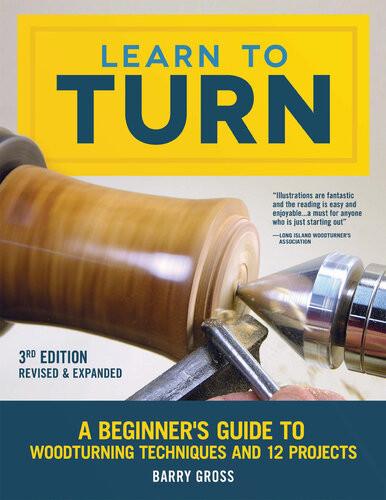
Instant digital products (PDF, ePub, MOBI) ready for you Download now and discover formats that fit your needs...
Start reading on any device today!
(Ebook) Biota Grow 2C gather 2C cook by Loucas, Jason; Viles, James ISBN 9781459699816, 9781743365571, 9781925268492, 1459699815, 1743365578, 1925268497
https://ebooknice.com/product/biota-grow-2c-gather-2c-cook-6661374
ebooknice.com
(Ebook) Matematik 5000+ Kurs 2c Lärobok by Lena Alfredsson, Hans Heikne, Sanna Bodemyr ISBN 9789127456600, 9127456609
https://ebooknice.com/product/matematik-5000-kurs-2c-larobok-23848312
ebooknice.com
(Ebook) SAT II Success MATH 1C and 2C 2002 (Peterson's SAT II Success) by Peterson's ISBN 9780768906677, 0768906679
https://ebooknice.com/product/sat-ii-success-math-1c-and-2c-2002-peterson-s-satii-success-1722018
ebooknice.com
(Ebook) Master SAT II Math 1c and 2c 4th ed (Arco Master the SAT Subject Test: Math Levels 1 & 2) by Arco ISBN 9780768923049, 0768923042
https://ebooknice.com/product/master-sat-ii-math-1c-and-2c-4th-ed-arco-masterthe-sat-subject-test-math-levels-1-2-2326094
ebooknice.com




(Ebook) Cambridge IGCSE and O Level History Workbook 2C - Depth Study: the United States, 1919-41 2nd Edition by Benjamin Harrison ISBN 9781398375147, 9781398375048, 1398375144, 1398375047
https://ebooknice.com/product/cambridge-igcse-and-o-level-historyworkbook-2c-depth-study-the-united-states-1919-41-2nd-edition-53538044
ebooknice.com
(Ebook) Introduction to Clinical Nutrition, Revised and Expanded by Vishwanath Sardesai ISBN 9780824740931, 0824740939
https://ebooknice.com/product/introduction-to-clinical-nutrition-revised-andexpanded-1409260
ebooknice.com
(Ebook) We Want to Live; Expanded and Revised In 2005 by Aajonus Vonderplanitz ISBN 9781889356105, 1889356107
https://ebooknice.com/product/we-want-to-live-expanded-and-revisedin-2005-7207708
ebooknice.com
(Ebook) Introduction to Computation and Programming Using Python, Revised and Expanded Edition by John V. Guttag ISBN 9780262316668, 0262316668
https://ebooknice.com/product/introduction-to-computation-and-programming-usingpython-revised-and-expanded-edition-58896172
ebooknice.com
(Ebook) Back to Nature: Guide to Tanganyika Cichlids, Revised & Expanded Second Edition by Ad Konings ISBN 9781932892031, 1932892036




https://ebooknice.com/product/back-to-nature-guide-to-tanganyika-cichlidsrevised-expanded-second-edition-2203214
ebooknice.com

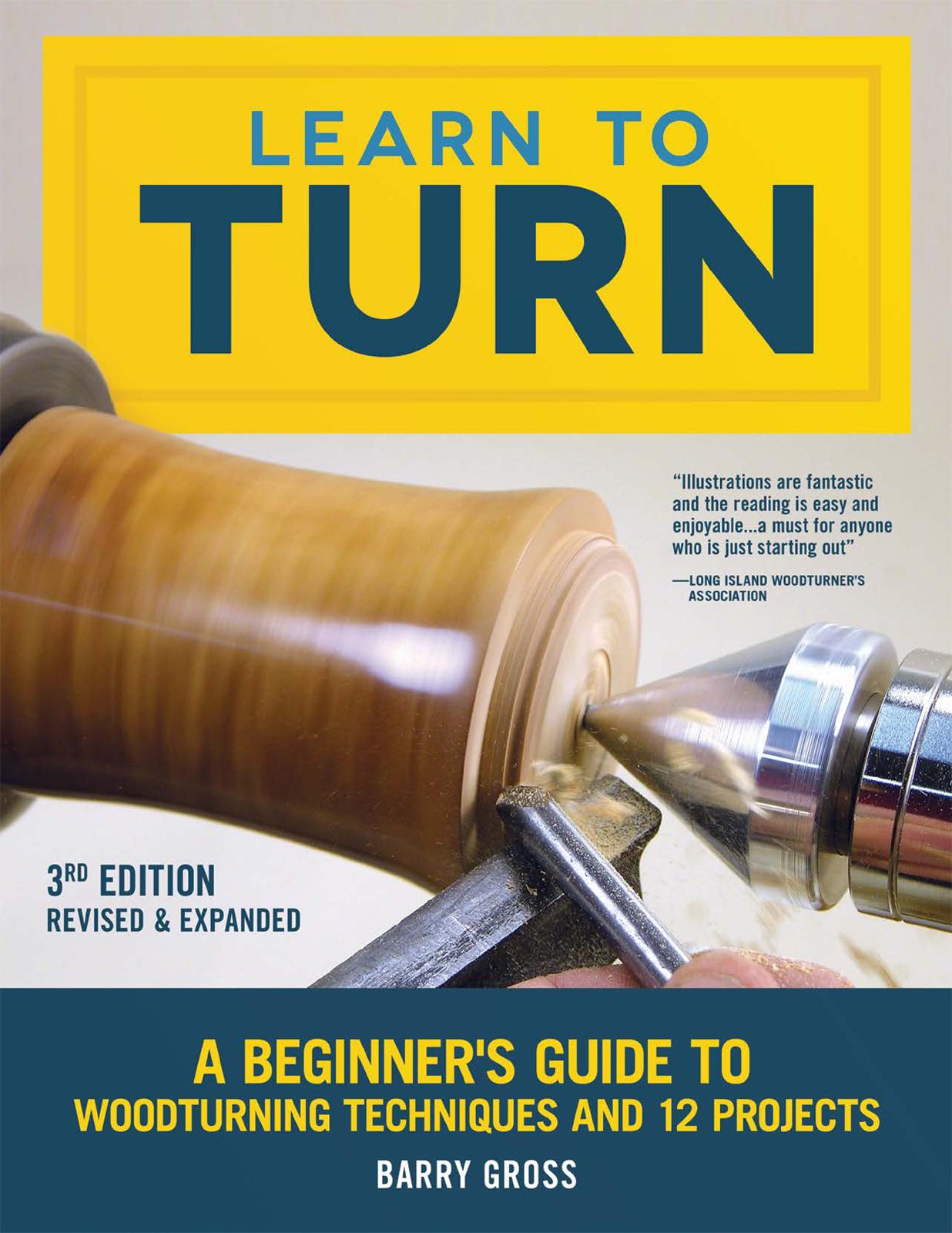

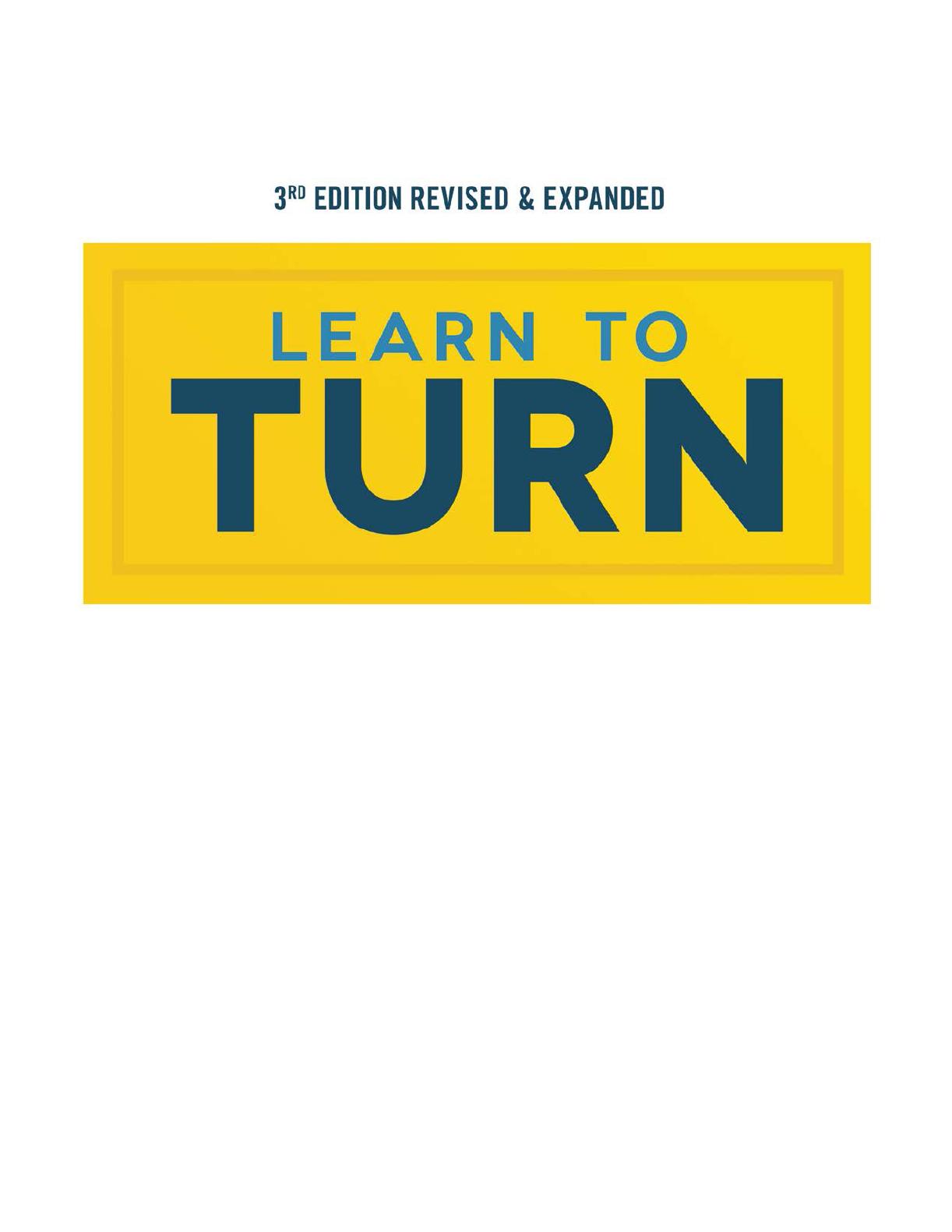


DEDICATION
Writing a book on woodturning takes a long time away from your family, and I am blessed with a wife and family who understand the time constraints needed to fulfill that obligation Thank you, Lenora (my best friend), who assists, guides, and offers a unique perspective to this obsession I have with turning!
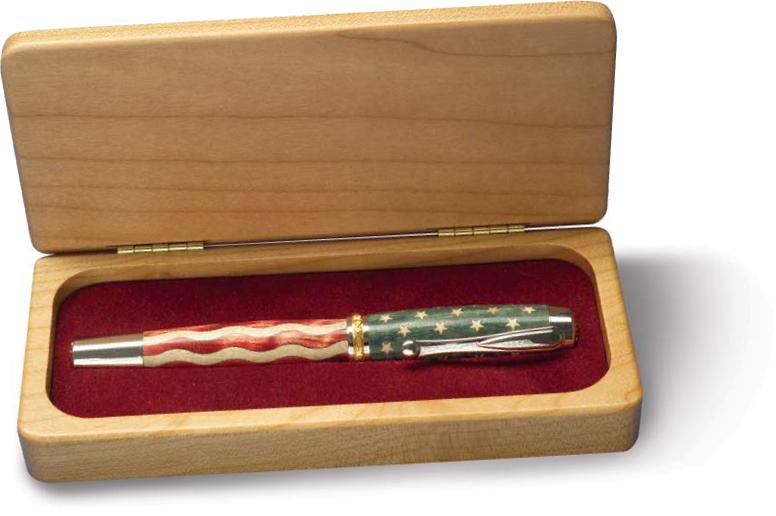
© 2018 by Barry Gross and Fox Chapel Publishing Company, Inc., 903 Square Street, Mount Joy, PA 17552.
Learn to Turn, Revised & Expanded 3rd Edition is a revised and expanded edition of Learn to Turn, 2nd Edition Revised and Expanded, first published in 2013 by Fox Chapel Publishing Company, Inc. The patterns contained herein are copyrighted by the author. Readers may make copies of these patterns for personal use. The patterns themselves, however, are not to be duplicated for resale or distribution under any circumstances. Any such copying is a violation of copyright law
Print ISBN 978-1-56523-928-9
eISBN 978-1-60765-502-2
The Cataloging-in-Publication Data is on file with the Library of Congress.
To learn more about the other great books from Fox Chapel Publishing, or to find a retailer near you, call toll-free 800-457-9112 or visit us at www.FoxChapelPublishing.com.
We are always looking for talented authors. To submit an idea, please send a brief inquiry to acquisitions@foxchapelpublishing.com.
Printed in China
First printing
Because working with lathes, wood, and other materials inherently includes the risk of injury and damage, this book cannot guarantee that creating the projects in this book is safe for everyone. For this reason, this book is sold without warranties
or guarantees of any kind, expressed or implied, and the publisher and the author disclaim any liability for any injuries, losses, or damages caused in any way by the content of this book or the reader’s use of the tools needed to complete the projects presented here. The publisher and the author urge all readers to thoroughly review each project and to understand the use of all tools before beginning any project.
ABOUT THE AUTHOR
Barry Gross’s love of woodworking started as a child, when he would build “boats” out of 2x4s and nails and then try to float them in the bay (unsuccessfully). He purchased his first lathe at the age of 15 and started to turn small spindles with little success because there was no real instruction available. There were no DVDs or turning clubs to advise him as there are today. Later on, however, Barry returned to woodworking and the lathe to create pieces of furniture. It was not until he received a lesson on pen making that his love of turning solidified. He has turned thousands of pens and small turnings using all types of materials. His pens have been purchased by the White House to give as gifts for foreign dignitaries, and many celebrities have purchased his fine writing instruments.
Barry also belongs to a number of turning clubs and is a member of the American Association of Woodturners, where he has demonstrated at their national symposiums. He demonstrates his unique brand of pen making at turning clubs and woodworking shows throughout the country. For the past few years, Barry has been teaching at Arrowmont School of Arts & Crafts and Marc Adams School of Woodworking. In addition to authoring five turning books, he has released two DVDs on pen making and published over 70 articles in various woodworking magazines, including Woodturning Design and Fine Woodworking In August 2012, he purchased woodturning supply company Arizona Silhouette and combined it with his own BG Artforms LLC to form a larger company that offers turning supplies worldwide.
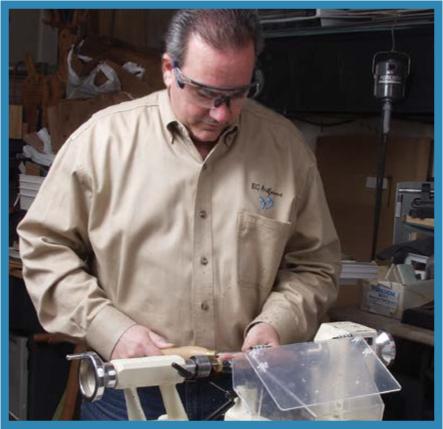
ACKNOWLEDGMENTS
First, I want to thank Alan Giagnocavo, Peg Couch, Gretchen Bacon, and the rest of the Fox Family for giving me the opportunity to produce another book on turning for Fox Chapel Publishing. Thanks elso to Greg Heisey and Scott Kriner for photography
For the finer points of turning, my friend Ed Ryan has been magnanimously offering his advice and guidance to me for years. I give full credit to Ed for showing me as well as hundreds of other turners the “ABC’s” of tool control. Whenever instructing students, using the “Ed Ryan” method always makes the subject of tool control much easier for students to comprehend.
The following companies and individuals, listed alphabetically, have either provided tools, supplies, or invaluable advice, and I want to thank them for their time and patience in assisting me with my questions.
Arizona Silhouette
Berea Hardwoods—Jim Heusinger
BG Artforms
Craft Supplies USA—Rex Burnham
Ironclad Performance Wear Kyle Jochai
New Edge Cutting Tools Fred Smith
Oneway Manufacturing—Stephen Feringa
Packard Woodworks Brad Packard
Penn State Industries Ed Levy, Mark Schwartz
Robert Sorby Turning Tools—Robert Walton
RPM Wood Finishes Group (Behlen Finishing Products)
Trend Airshield and Trend Air Ace—Terry Cole
Triton Powered Respirator Mark Owen
Woodcraft Corporation Ben Bice
CONTENTS
INTRODUCTION
1: 2: 3: 4:
GETTING STARTED
Safety
Basic Workshop and Tools
Choosing Wood
Sharpening Tools
Sanding
Finishing
START TURNING
Getting Ready to Turn
Turning Tool Exercises
Spindle Turning Projects
Faceplate Turning Projects
Spindle and Faceplate Projects
Troubleshooting
MARKETING AND SELLING YOUR WORK
GALLERY
GLOSSARY


INTRODUCTION
So much has been written about woodturning in the past that it creates a challenge to approach the topic with an innovative agenda. My method is to look at woodturning from the perspective of the student and not the teacher. Looking at woodturning from this viewpoint brings to light some of the frustrating aspects of the hobby as a beginner—such as feeling nervous when you first try to turn a piece of wood on a lathe; struggling to grind an edge on a tool; attempting to get a good finish on a bowl; or turning the final bead on a spindle, getting a “catch,” and demolishing your project. I can identify with these and other apprehensions because I did them. Any experienced turner will tell you that we all make mistakes and that practice working at a particular skill is all it takes for the mistakes to correct themselves. However, by identifying some common problems and offering tips to overcome these issues, the hobby will become more enjoyable and some of the trepidation will be relieved.
So, what are you going to learn from this book? Many topics will be covered, and safety is an important issue that will be discussed. Controlling dust in your shop is especially important to your safety—
it’s a necessity and not a luxury! For those who have not selected a lathe, you can see what features are important to you and choose the correct lathe for your individual needs. You’ll also discover what other power tools are necessary for your shop and which ones are “nice to have.”
You’ll learn where and how to obtain wood—from the raw log or by purchasing a prepared blank how to select turning tools, and how to use the ABC’s of tool control. Certain projects will be made with specific turning tools to enrich your tool control.
Once your project is turned, you will have to sand and finish it. Here we will discuss many different types of finishes Once you have completed your work, how do you market the finished product? A gallery of finished work by a coalition of distinguished turners is available for admiration and for inspiration.
Finally, to me, the most important subject is troubleshooting and how to fix some of the problems you will encounter.
That’s it a big task, but one I am sure you will enjoy. Now, with all that said, we have a lot of work ahead of us, so let’s have some fun and “make some dust!”
Barry Gross

















